The Samsung Galaxy S9 and S9+ Review: Exynos and Snapdragon at 960fps
by Andrei Frumusanu on March 26, 2018 10:00 AM ESTThe Snapdragon 845 - A Quick Recap
Starting with Qualcomm's Snapdragon 845 – we already extensively covered during the December launch announcement as well as Qualcomm’s traditional performance preview most recently in February.
| Qualcomm Snapdragon 845 vs 835 | |||
| SoC | Snapdragon 845 | Snapdragon 835 | |
| CPU | 4x Kryo 385 Gold (A75 derivative) @ 2.8GHz 4x256KB L2 4x Kryo 385 Silver (A55 derivative) @ 1.77GHz 4x128KB L2 2MB L3 @ 1478MHz |
4x Kryo 280 Gold (A73 derivative) @ 2.45GHz 2MB L2 4x Kryo 280 Silver (A53 derivative) @ 1.90GHz 1MB L2 |
|
| GPU | Adreno 630 @ 710MHz | Adreno 540 @ 670/710MHz | |
| Memory | 4x 16-bit CH @ 1866MHz LPDDR4x 29.9GB/s 3MB system cache |
4x 16-bit CH @ 1866MHz LPDDR4x 29.9GB/s |
|
| ISP/Camera | Dual 14-bit Spectra 280 ISP 1x 32MP or 2x 16MP |
Dual 14-bit Spectra 180 ISP 1x 32MP or 2x 16MP |
|
| Encode/ Decode |
2160p60 10-bit H.265 720p480 |
2160p30 (2160p60 decode), 1080p120 H.264 & H.265 |
|
| Integrated Modem | Snapdragon X20 LTE (Category 18/13) DL = 1200Mbps 5x20MHz CA, 256-QAM UL = 150Mbps 2x20MHz CA, 64-QAM |
Snapdragon X16 LTE (Category 16/13) DL = 1000Mbps 3x20MHz CA, 256-QAM UL = 150Mbps 2x20MHz CA, 64-QAM |
|
| Mfc. Process | 10nm LPP | 10nm LPE | |
The Snapdragon 845 is the first SoC to adopt ARM’s new DynamIQ CPU topology and cores. The new configuration includes a larger coherent cluster instead of separate clusters for the little and big cores. While this new configuration allows for better performance and core configuration scaling, Qualcomm opted to continue the traditional 4+4 CPU set that we’ve seen with the Snapdragon 835. The performance core comprise of the Kryo 385 Gold cores which are derivative of ARM’s Cortex-A75’s and are running at up to 2803MHz. The efficiency cores are the Kryo 385 Silver cores which are based on ARM Cortex-A55’s and are running at up to 1766MHz.
Among the big improvements of the Snapdragon 845 includes the introduction of the new X20 modem which supports LTE UE Category up to 18 in the downstream and Category 13 in the upstream.
The Snapdragon 845 is also the first SoC from Qualcomm to adopt the new in-house designed Adreno 630 which marks a generational leap in the graphics department. I can confirm that Qualcomm continues the trend of trying to maintain clock frequencies between generations and the Adreno 630 in the Galaxy S9 comes in at 710MHz – a bump from the 670MHz in the Galaxy S8 but the same as other Snapdragon 835 devices. We’ll be having a more in-depth evaluation of the new Adreno in the GPU part of the review later on.
Unique for Android SoCs is also the first time introduction of a new system wide “L4” cache 3MB in size which is meant to reduce system memory access not only from the CPUs but also every other IP block in the SoC, thus gaining power efficiency.

Snapdragon 845 Floor Plan. Image Credit TechInsights
Our friends at TechInsights this week were able to publish a die shot of the Snapdragon 845, and it’s interesting to see the changes compared to the Snapdragon 835. Because the Snapdragon 845 is manufactured on Samsung’s 10LPP process, there aren’t any new density improvements over last year’s 10LPE Snapdragon 835. Naturally because the new SoC includes new IP and improvements, die size has increased from 72.3mm² to around 94mm².
The biggest contributor of this increase will be the new system cache, which is part of the area that TechInsights (erroneously in my belief) marked as the DSP. Here we four new blocks to what I think are simply four banks of SRAM and their arbitration logic and their responsibility is divided among the four memory controller channels.
On the CPU side we see the new DSU lying in-between the A55 cores with the A75 cores spread around the little cores and the DSU. The 2MB L3 cache a big unified block alongside the DSU and little cores. Based on TechInsights preliminary low-res picture, the CPU complex comes in at 11.39mm² with an A75+L2 core coming in at 1.57mm² and the A55+L2 coming in at ~0.53mm².
The Adreno 630 seems to have consolidated a lot of its inner components. We still see a clear 4-shader core arrangement, however instead of having one adjacent block next each shader core we now see a larger block shared among two shader cores. The shader cores are also vastly improved as they have doubled the ALU pipelines. On the die shot it looks like the GPU actually only has 2 separate units, and this is confirmed by the drivers of the Snapdragon 845: instead of a quad-core Adreno 540, the Adreno 630 is a dual-core GPU. The texture units/ROPs/GMEM blocks have also been consolidated from four units down to two larger blocks, with a 50% increase in texture throughput. Overall there’s been extensive rework throughout the GPU resulting in a “simplified” configuration that seems to be forward-looking in terms of future scalability. Qualcomm has also achieved this in a mere ~10.69mm², making the Adreno 630 the by far smallest high-end GPU in the mobile space by a significant margin.
In terms of CPU performance, the new Kryo 385 Gold cores shouldn’t veer off much from ARM’s Cortex A75 microarchitecture. We’ve extensively covered the improvements in last year’s Tech Day reveal article. Overall the Cortex A75 is a strong successor to the A73 but refines the microarchitecture in terms of memory performance and especially floating point performance.
Following the performance preview of the Snapdragon 845 in February I noted that I was a bit disappointed in the end-performance of the CPUs as they did not reach ARM’s quoted performance targets. I want to revisit this a bit attempt to try to explain the different factors that lead to it.
Firstly ARM’s performance figures were projected on a configuration of A75 coupled with 512KB L2 caches. Qualcomm opted to use 256KB caches which may account for a few percentages in performance.
The new memory subsystem of the Snapdragon 845 also isn’t without faults: the initial increased DRAM memory latency that we measured on Qualcomm’s QRD845 reference platform is definitely carrying over to retail consumer devices, as the Galaxy S9 exhibits the same behaviour. This is quite a disappointing characteristic to find as it will counteract a lot of performance gains – especially in memory latency sensitive workloads – which we’ll confirm later on in the SPEC benchmarking portion.
Finally, one big question that Qualcomm teased about in its announcement event, is the configuration of the DSU. Qualcomm explained that the CPU complex was powered by three voltage planes – and I can confirm that my initial assessment was correct as two frequency and voltage planes power the little and big cores, and the third voltage plane powers the DSU/L3 and the cDSP (On of the various DSPs). The frequency here tops out at 1478MHz which is a tad lower than I had expected.
When reading ARM’s TRM (Technican Reference Manual) of the DSU, we see one particular claim regarding the recommended clocks of the L3 in relation to the CPU clocks:
"SCLK frequency affects the L3 hit latency and, therefore, it is important for achieving good performance. For best performance, ARM recommends running SCLK as close to CORECLK[CN:0] frequency as possible. However to reduce dynamic and leakage power, targeting a lower frequency might be required. Running SCLK at least approximately 75% of the CORECLK[CN:0] frequency might give an appropriate balance for many systems."
The Snapdragon’s big cores run at up to 2803MHz so running the L3 at up to only 1478MHz represents only 52% of the peak frequency. We’re not able to judge what kind of performance impact Qualcomm’s configuration has, but it looks like there will be some sort of degradation compared to an optimally run system.
All in all – the reduced 256KB cache, DRAM memory latency degradation as well as the more conservative maximum frequency of the L3 all can add up and may explain why the Snapdragon 845 wasn’t able to quite reach ARM’s projections on performance of the new core.
In general the Snapdragon 845 looks like a great SoC on paper – there should be good CPU improvements as well as excellent GPU leaps, but that’s no news given that we knew that from the performance preview. The only remaining question is power efficiency, which we’ll be looking at shortly after we cover the competition’s SoC.


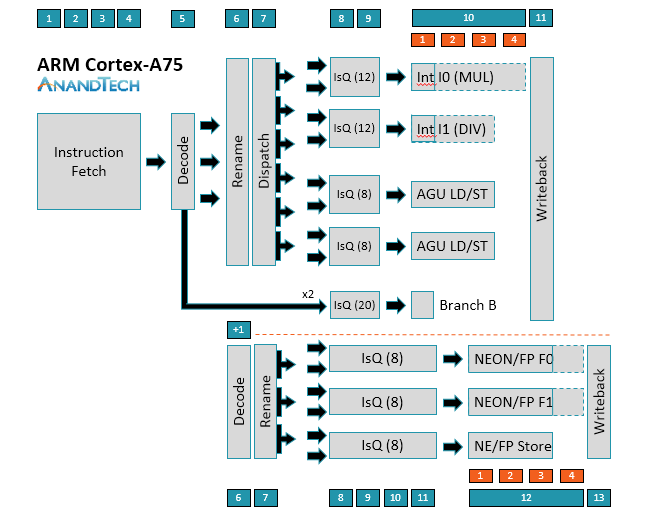
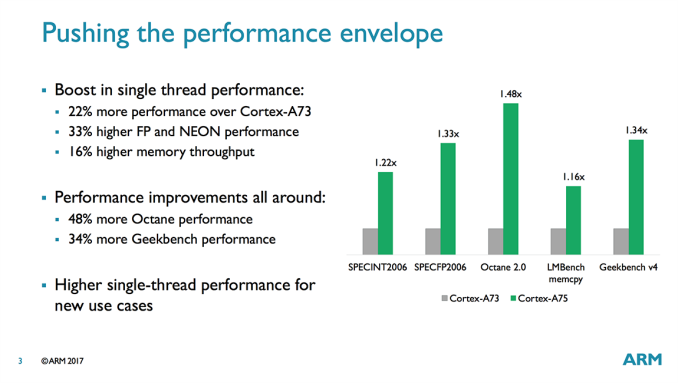
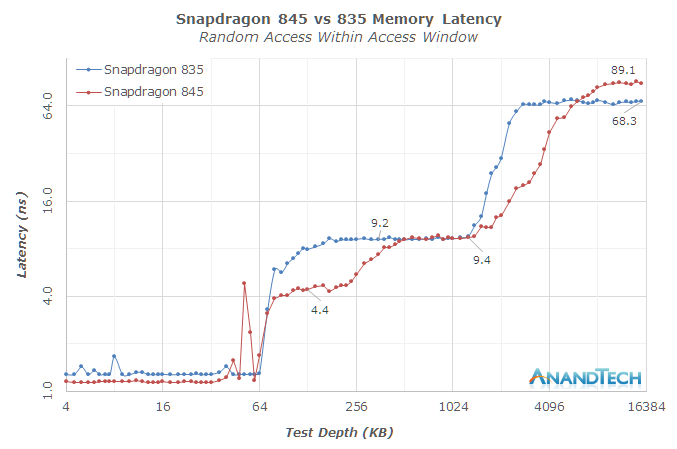
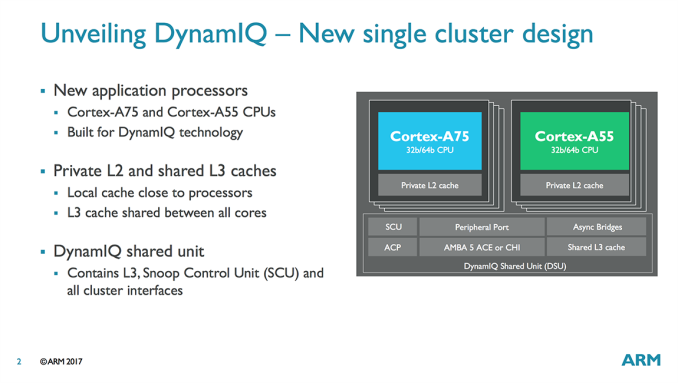
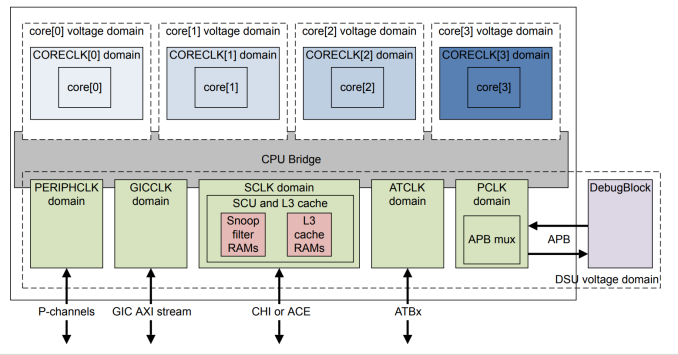








190 Comments
View All Comments
peevee - Friday, April 6, 2018 - link
Essential 2?Given small real-life difference between 845 and 835, Essential PH-1 is still a great device. And very appropriately priced. Nothing to wait there.
StrangerGuy - Tuesday, March 27, 2018 - link
All the S9 did was made me appreciate my S8+ more, of which I only bought because of generous employer benefits. Without which I wouldn't even have cared about these overpriced flagships.Valantar - Tuesday, March 27, 2018 - link
I pointed this out in your S9 launch article, and apparently I have to make my point again: neither light nor depth of field is the reason for the aperture change - it's purely to combat distortions and lack of sharpness in the image due to the combination of a large aperture and tiny, tiny glass.Why? When it comes to depth of field, one needs to factor in not only the aperture, but also the crop factor (sensor size relative to standard 35mm film). As such, f/1.5 on a standard cell phone 1/2.3" sensor is roughly equal to f/8.4 on a 35mm sensor, or f/5.6 on an APS-C sensor. This is one of the main photographic advantages of large-sensor cameras: that you can get shallow depth of field with lenses that are actually possible to manufacture.
An example: https://dofsimulator.net/en/?x=EAyAeuF3AAAIJEwkAAA...
As you can see here, with a 1/2.3" f/1.5 sensor, focusing on a subject 3m away gives you an in-focus area of ~43m - this is NOT too little, not by any measure. Moving the subject to 5m gives you effectively infinite focus, with everything from 1.9 to infinity being in the focal plane. You'd need your subject at less than .5 meters for DoF to be an issue - which it would be with most cameras at that distance.
On the other hand, it's well known that for large apertures, anything but the best glass will lead to aberrations and distortions in the image, and a general loss of sharpness across the frame. Look at even a single DSLR lens review - they're _always_ sharper when stopped down. With a lens stack this tiny, there's no feasible way to control this - it's likely physically impossible to avoid aberrations and distortions at an aperture number like this. Hence, the variable aperture.
Now, AT is usually very accurate in their reporting. Could you PLEASE correct this? Pretty please? Since you claim to be doing a deep-dive into the camera, this is not a good look.
Valantar - Tuesday, March 27, 2018 - link
To clarify: You say that "The F/2.4 aperture in day-light shots is not a gimmick and very much an advantage to the S9 as its deeper depth of field is noticeable in shots, producing sharper images than the F/1.5 aperture." This is a misunderstood conclusion. The added sharpness is largely not due to a deeper depth of field, but rather due to the stopped-down aperture resulting in a generally sharper image. This conflates two different characteristics, focus depth and lens/optical sharpness. These are not the same. If you did a more rigorous test where both cameras focused on the same spot (ideally not in the centre of the image) in a scene with sufficient depth, or conversely shot against a flat target with a lot of detail, you'd likely see this pretty clearly, as _even the focal point_ would be sharper at f/2.4. If this was due to depth of field, both settings would be equally sharp at the focus point, while what you're saying here is that f/2.4 is sharper _across the image_. That's a typical effect of a smaller aperture improving sharpness, not of the smaller aperture restricting DoF.peevee - Friday, April 6, 2018 - link
" _even the focal point_ would be sharper at f/2.4"If it is the center, it might not be so because with such tiny sensor, at f/2.4 maximum resolution is diffraction-limited. Need the exact size of the sensor to confirm, but I am almost sure than even at f/1.5 Airy disk is bigger than a pixel.
Takethis - Tuesday, March 27, 2018 - link
Any chance they Samsung could fix their “slow-and-steady” DVFS approach with software updates? Given the actual state of things, Snapdragon 845 phones are the one to buy this year (I'm thinking Oneplus 6)Ankurg - Tuesday, March 27, 2018 - link
With due respect to the author and the site, I have to believe that most of the extensive tests and their results will not affect the avg day-to-day usage of this device.I am already seeing the panic this review has created on reddit, with many people now re-thinking whether to purchase or not...
Yes, most youtube/site reviewers don't go as deep as this, but a problem so steep would have been felt.
I would advice my fellow mates here not to lose sight of the fact that this is the best android phone you can buy right now.....irrespective of the choice of chip.
SirCanealot - Tuesday, March 27, 2018 - link
"With due respect to the author and the site, I have to believe that most of the extensive tests and their results will not affect the avg day-to-day usage of this device."While I'm happy to have a super-fast phone with crappy battery life, I'm not happy to have an average-speed phone with crappy battery life. IE, I have a Exynos Note 4 which is fast with crappy battery life and it still does the job...
The crappy battery life is going to effect every single user and every one of your friends in America is going to get a better performing phone with better battery life. Day-to-day I'm getting worse performance and battery life; this means I can re-consider my options now I have all the data.
Why shouldn't this review make you reconsider? That's what it's meant to do. Unless you're a Samsung shareholder, I wouldn't pay any attention to this completely normal thing of human society...
id4andrei - Tuesday, March 27, 2018 - link
The author himself stated that you will not see any difference as an ordinary consumer. Some slight circumstantial scrolling stutters are all he noticed.Still the Exynos underperforms relative to its advances in chip design.
peevee - Friday, April 6, 2018 - link
"The author himself stated that you will not see any difference as an ordinary consumer."Nope. The fast core only winding up after 0.4s is VERY noticeable as good phones will already finish launching an app or rendering a local HTML in Webview by this time, some time ago.